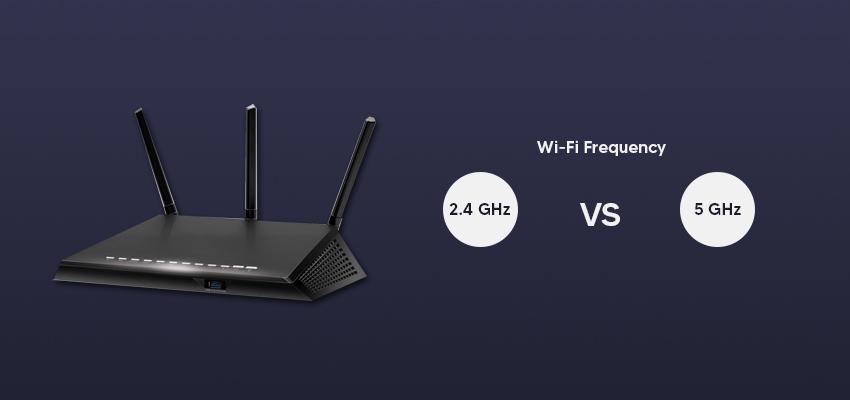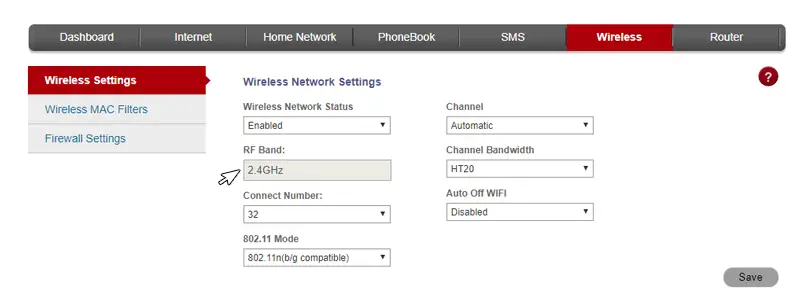
Wi-Fi Frequency: 2.4 GHz vs. 5 GHz
Posted May 22, 2020, 3:58 a.m. by Emil S.When it comes to wireless signaling frequencies, the 5 GHz and 2.4 GHz has its strengths and weaknesses. Here, we will discuss the factors that you should consider when it comes to choosing the right frequency band.
Compatibility
All modern Wi-Fi devices can use 2.4 GHz connections. Some equipment can support both. For instance, the dual-band wireless routers are home broadband routers that can support both 2.4 GHz and 5 GHz radio frequencies.
Take note though that dual-band wireless routers come in two types. First, is the selectable dual-band wherein the router can work both frequencies but you can only use one at a time. The second type is the simultaneous dual-band which allows you to use both frequencies at the same time – this means you get to choose between two Wi-Fi networks.
Some brands allow you to use just one SSID for both frequencies so that all you see is one network operated by both frequencies.
Network Speed
Network speed involves how fast you will be able to download and upload files. Wi-Fi networks have different standards and these standards determine networking technology improvements. The standards come in the order of 802.11a, 802.11b, 802.11g, 802.11n, 802.11ac, and 802.11ad. These standards also influence your GHz band frequencies.
The 5 GHz frequency is technically faster as long as the electric power is maintained at a higher level. It also carries more data than the 2.4 GHz frequency. This is because 5 GHz can support higher maximum data ranges when it comes to network standards 802.11n, 802.11c, and 802.11ad. Generally, the 5 GHz frequency can perform a quicker transmission of data.
When it comes to home Wi-Fi connections where people usually use up a lot of network traffic and data due to video streaming, downloading, and gaming consoles, it is best that you choose the 5 GHz frequency for your Wi-Fi connection.

Network Interference
Interference happens when signals can mix up with other devices or appliances. This can interrupt your Wi-Fi network's speed because all these devices and appliances are competing with your Wi-Fi for radio space.
The attempt to use the same radio space is the reason why some channels become overcrowded. The 5GHz frequency has 23 accessible channels while the 2.4 GHz frequency only has 3 accessible channels. When all the channels are being used, you get irregular connections and slow Internet speed.
The 2.4 GHz frequency is commonly used in home appliances like baby monitors, microwaves, cordless phones, and automated garage doors. Since the 2.4 GHz frequency is more common in consumer products, you will likely get more interference with it compared to the 5 GHz frequency.
If you want a smooth connection, which is important if you love to stream videos, the 5 GHz frequency is the more stable choice.
Network range
Network range refers to how far your Wi-Fi signal and data can travel. The general rule is that the higher the Wi-Fi frequency, the shorter the network range it covers. So, when it comes to range, the 2.4 GHz frequency is better since it covers a larger area compared to what the 5 GHz frequency can cover.
You also have to know that 5 GHz frequencies have weaker signals since they are unable to penetrate solid objects like walls or floors – not like 2.4 GHz frequencies. This further limits their range inside homes. If you still want to go with the 5 GHz frequency because of the speed, make sure your router will be situated in the central part of your home and that it is far from obstacles.
You can fix the weak signal of 5GHz frequencies by getting a range extender device or a mesh Wi-Fi system but this will be a significant additional cost and may go beyond your budget.
Cost
A common misconception is that the 5 GHz frequency is more expensive than the 2.4 GHz because it is a newer technology. The truth is, both frequencies have existed for a long time already and both are innovative technologies.
Routers that can work with both 2.4 GHz and 5 GHz frequencies are more expensive compared to routers that only offer one frequency. As you can see, each frequency has its advantages over the other. In a nutshell, 5 GHz is the faster choice but it has a limited range.
However, if you want a lot of range and a strong signal that can penetrate through walls, you are better off with the 2.4 GHz frequency. If you have the budget for it, we suggest you get the best of both worlds by purchasing a dual-band wireless router.
